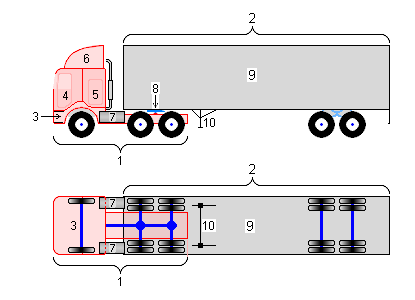Porsche Carrera Cup Italia: race car test – Sports Cars
Content
Porsche Carrera Cup Italia: race car test – Sports Cars
On the occasion of the opening of the Porsche Carrera Cup Italia championship, we tested the racing car.
Imola it's wonderful in April: a green, sunny, warm city. Today, however, light fog from yesterday's rain covers the hilly landscape, and moisture stains the asphalt with dark patches. A detail that's not enough to ruin a wonderful day, but it becomes relevant the moment you need to try it. Porsche GT3 Cup race for the first time.
Does it official test day, today. Season Porsche Carrera Cup Italy is about to start (first race April 27th right in Imola), and this year it will be even richer and more controversial.
IT FORMAT 2018
The format provides seven rounds with double some, each of 28 minutes + one lap. The racing weekend opens with a session one hour free practice, While qualifications in which all pilots will take part, have duration 30 minutesthen I The fastest 10 will have 10 minutes to compete for pole position. This year there will also be two categories of cars on the track: the gentlemen's, which won the Michelin Cup, and the "professional", which will use the 2018 car.
NEW PORSCHE GT3 CUP
New Porsche GT3 Cup (Model 991 MK2) mount 6-cylinder boxster 4.0 liters the road version (the 2017 car still has 3.8 liters), which means it has more torque and power. The cavalry is actually passing by 460 CV November 2017, XNUMX 485 CV... For reliability reasons, the Carrera GT3 cup motors are less powerful and run at lower revs than the road versions; maximum power is actually developed 7.500 rpm instead of 8.500. In addition, with the switch to a new 4,0-liter engine, overhaul is carried out after 100 hours of use, which is almost twice the duration compared to the "old" 3,8 liters. The clutch is a three-plate, and the gearbox is a six-speed sequential, which is actuated by relatively small paddles on the steering wheel.
The rest of the car remains almost the same: devoid of everything, with a huge adjustable rear wing and reduced to a minimum ground clearance. The suspension layout remains the same (McPherson at the front and multi-link at the rear, but of course you can adjust camber, toe, pitch and angle of attack. The slimming treatment applied in every racing version has reduced the weight of the GT3. To 1.200 kg, quasi 230 kg less compared to the road version.
Then Michelin slick tires are installed on it. 18 " (instead of 20 inches) from 27/65 front and 31/71 rear.
BEHIND THE STEERING WHEEL
I've always driven front wheel drive race cars, so this is new to me. Luckily i know Porsche and I recently tried the new 911 GT3, but still I don't know what to expect.
From the outside it scares but as soon as I enter the cockpit I feel immediately becomes at ease. Visibility is very good for a racing car, the seat is resting but not deeply recessed. On the other hand, the cup is derived from the production version, therefore retains much of the "neatness" of the 911. Also save the pedal board. The clutch pedal is rigid and has the same travel as the bottle cap.but getting away is easier than I expected. There is no electronic assistance, which is why traction control is called “right foot” and ESP is called “judgment.” Also becauseThe 911 Carrera Cup is an educational, didactic machine ideal for nurturing young talents.. However, the ABS system remains (introduced two years ago), adjustable until the intervention is canceled; but it's still a racing system that has little to do with the road system.
Unfortunately, the first three laps I run at 60 km / h in yellow (yellow flag for the entire track), but they are useful to draw attention to some details. There The first impression is that the GT3 is even smaller and more assembled than the road version. It moves with the same momentum as an empty can, and at low speeds, the transmission bounces and sobs.
As soon as I see a green flag fluttering in front of me I start to run the engine at more exciting revs. The sound of the cup is metallic and deep, but you can feel it lacks the heartbreaking last 1.000 laps that the road version has.; the fact remains: the GT3 is damn fast, but not intimidating, quite the opposite: the engine seems almost overpriced compared to the chassis. She's not scary or grumpy, she just has a very, very high limit. The grip is monumental, so big that you can use the accelerator as if it were an on / off button in just about any corner, but you have to get used to going against your instincts.
At the end of the Imola straight line, the nose is lightened and, qwhen you exceed 260 km / h in this little hint to the left, it starts to swim... It's an insane adrenaline rush.
Luckily The Porsche GT3 Cup eliminates large chunks of speed with amazing ease: The pedal is stiff, but at the same time adjustable and precise, which allows you to adjust the braking with millimeter precision.
I only go four or five laps, not enough to understand its true limit, but enough to leave an indelible mark. Long live racing cars.

